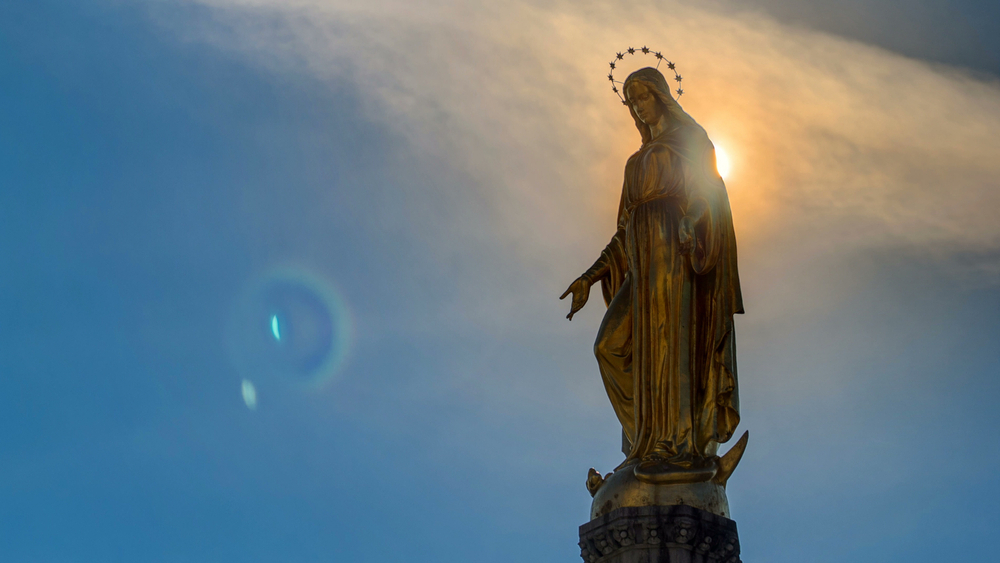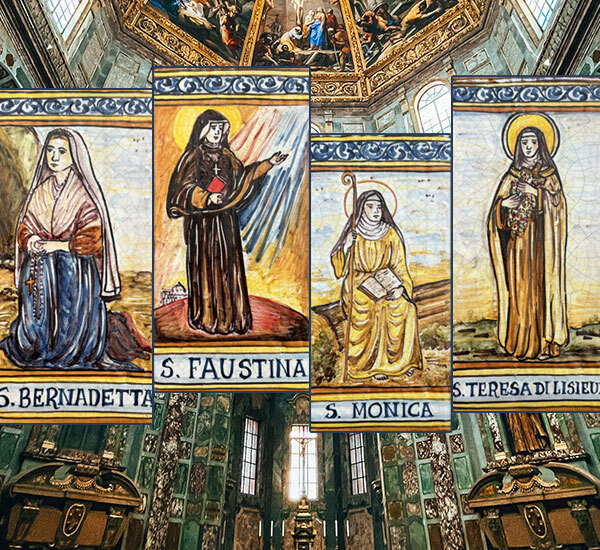Celebrating All Saints Day in Italy
Celebrating All Saints Day in Italy
November 1st is one of the most important religious and national holidays in Italy. Known as Le Festa di Ognissanti, or in England All Saints Day, this is a day to commemorate all the saints of the Roman Catholic Church, both known and unknown, who have attained a glorious place in heaven. Today in Italy shop, schools and businesses will be closed as Italians gather to remember the holy saints in heaven.
This is a day of celebration where Italians gather with family. Observant Catholics attend Mass to celebrate the saints and later in the day, gather for a special meal with their extended families featuring traditional dishes such as Ceci Con le Costine, a comforting soup with chickpeas and pork ribs, and Il Pane de Morti, a sweet made of crumbled biscuits, raisins, sugar, cinnamon, and chocolate. Many families exchange saint medals representing such beloved figures like Padre Pio, St. Francis, and St. Michael, who are seen as sources of spiritual guidance and comfort. These medals become treasured keepsakes which are passed down from generation to generation, building a legacy of faith and spirituality.

In the 3rd century, the Romans embarked on a horrific persecution of Christians. Christians were hunted down and martyred for their faith. The faithful remembered these martyrs and on the anniversary of their deaths special prayers were said for the departed. On May 13, 609 or 610, Pope Boniface IV consecrated the Pantheon, a former pagan temple, to the Blessed Virgin Mary and all the martyrs and ordered an anniversary for the feast of the martyrs to be held every May 13. It is suggested May 13th was chosen by the Pope because it was the date of the Roman pagan festival of Lemuria, in which malevolent and restless spirits of the dead were propitiated. In 731, Pope Gregory III expanded upon the idea of remembering the martyrs and decreed November 1 as the day of celebration for all martyrs and saints.
Worried that all the dead were not being remembered, Odilo, the fifth Benedictine abbot of The Monastery at Cluny, established All Souls Day. He chose the date of November 2nd as it comes directly after All Saints Day.
In Italy, the festivities continue onto November 2nd, All Souls’ Day, which the Italians refer to as Il Giorno dei Morti (The Day of the Dead). This day is dedicated to celebrating departed family and friends. Festivities start at dawn with a Mass where prayers and alms are given for the dead, as well as for souls in purgatory. After Mass, family members visit cemeteries where they clean the gravesites and adorn them with flowers, especially chrysanthemums, which symbolize death and mourning in Italy.

Afterwards Italians gather with extended family for a feast. Believing that the dead will return to pay a visit on All Souls’ Day, Italians set a place for the dead at the dinner table and leave bottles of wine and water around for them to drink. In Sicily, children leave their shoes outdoors while praying to the dead, hoping the dead will fill their shoes with sweets and goodies. In Sardinia, after the meal, families do not clear the tables but leave everything behind just in case the dead are looking for a late-night snack. Like Halloween trick or treating, children visit neighbors, knocking on doors, saying “morti, morti” to receive sweet treats.
So, this year, celebrate the dead Italian style!
Memento mori!
(Remember The Dead)
Favorite Italian sweet treats for All Saints' Day:
Ossa dei Morti: cookies look like the bones of the decedent
Rame di Napoli: soft chocolate cookies with dark chocolate, white or pistachio frosting
Nzuddi: almond cookies








